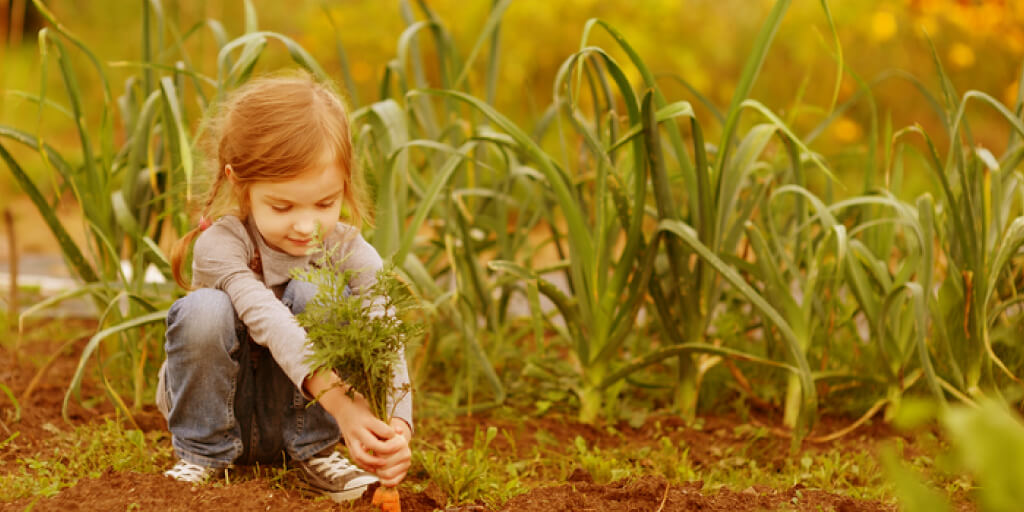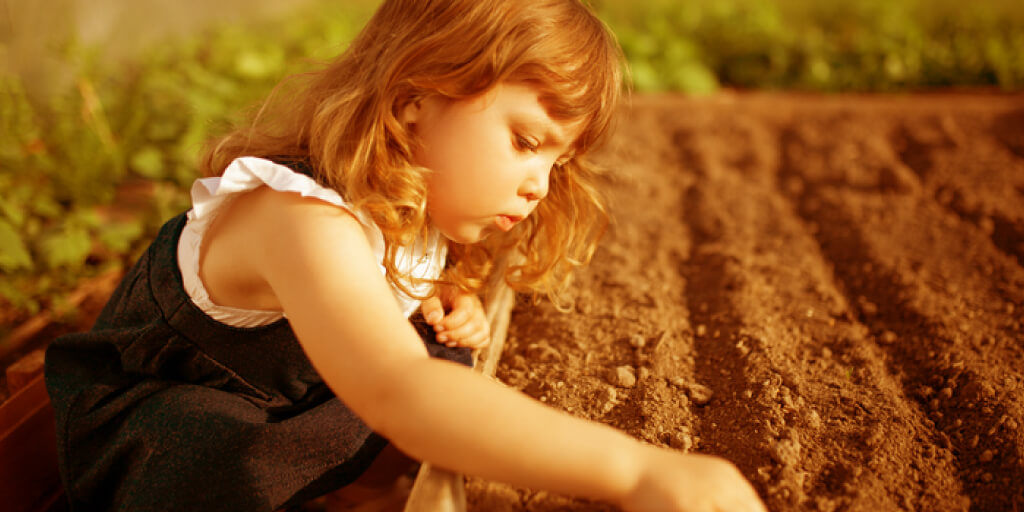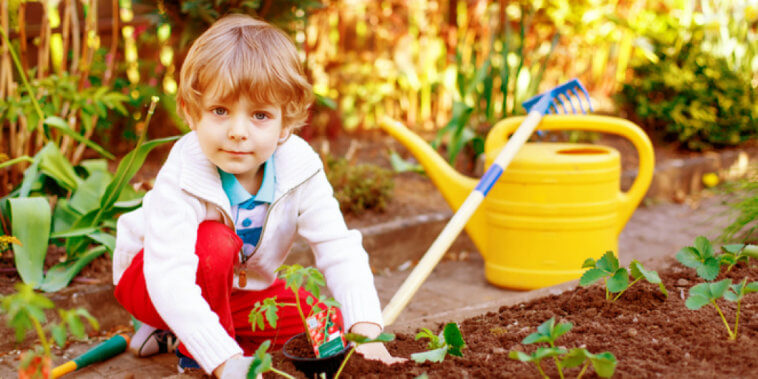Gardening is such a lovely activity that’s beneficial both for humans and nature. However, not enough kids are involved in these activities and there's real health benefits they are missing out on. But fortunately, there is a widespread idea of school gardens as an educational tool.
So, why would you want a school garden in the first place?
How do you even make one?
Here are some ideas to get started!

What are the Benefits of a School Garden?
Many kids nowadays grow up in the world of technology, without that necessary touch with nature. As they spend most of their time at school, this would be the perfect place to include some great gardening activities.
Here are some benefits it could bring:
Connection and love for nature
Among all of the climate changes, it’s very important to have love and appreciation for everything that we have. When kids work in the garden, teachers can tell them about the water cycles, the food chain and what climate change means for us. They can tell them about everything that plants are doing for us and how great they are. Children can learn just how important conservation of those plants is and they will spread the knowledge around.
They can learn a lot
While learning about plants from books is important, nothing beats a hands-on experience that they can have with a school garden. Even better, they can learn many different things related to various subjects. Gardening provides for a creative outlet at school and a better way of learning about science, math, biology and other subjects. Teachers can tell them about the biology of plants, the science behind it and many other subjects.
They can learn about proper nutrition
Health and nutrition are probably the most important topics that children should learn. However, this topic is often overlooked and children are not educated about the healthy options available. Gardening can show children just how healthy fruits and vegetables are. In fact, scientific evidence shows that children who participate in gardening not only do better in school but that they also have better eating habits.

How Gardening Helps Students Learn
Children don’t always have to learn through books or screens. In fact, hands-on experience is much more educational and it can help them develop new skills much faster. Plus, it’s a lot healthier for them.
Here are some valuable skills they will learn this way:
Responsibility – Teaching them how important it is that they are responsible is one of the key factors to raising good people. Gardening can be a fun way to show them what their responsibility can make. For example, if they take good care of their plants, the plants will grow. They will be so proud of their achievements.
Being creative – Gardening stimulates their imagination. Selecting plants, learning how to care for them and seeing them grow boosts creativity and teaches them new things.
Proper nutrition – Growing your own food is exciting and fun. It provides for healthy meals, and children can experience true healthy, natural food without pesticides or additives.
Being active – Instead of sitting in a classroom all day, children can be outdoors and working on the garden. It’s an excellent opportunity to study and exercise at the same time.
Discovering new things – The outdoor space is a great place for children to discover nature. There are numerous educational benefits and the time spent outside will show them many fun things. They can learn about plants, animals, insects and how it all works together.
It will give them confidence – Gardening boosts children’s confidence and stimulate positive thinking. They will be engaged more and they will spend quality time with each other, making new friends.

How Do You Build a School Garden?
A school garden is a wonderful place for children to learn and engage with each other. Over the last few years, the trend of school gardens has grown and now it’s becoming a more regular occurrence in schools.
If you want to make one in your own school, here are the steps and top tips:
Get an approval – Before you start with the garden, you will need to make the case and then ask for approval to make the school garden. Unless they are already for it, you will have to explain why you want one. Present them with all of the benefits that a garden can have. Schedule a meeting, prepare and then present your case. You can also recruit free help from parents, teachers, community members and anyone else who wants to help. You can also ask for donations, apply for grants or find other ways to get money – especially so if administrators are worried about funding.
Figure out a placement – When your garden gets approved, you need to figure out a good place for that garden. There are numerous factors to consider – availability for teachers and students, availability of a water source, availability of sunlight, size of the space for future development, soil quality and so on.
Design the garden – Once you have the placement, you should figure out the design. Don’t start planting if you don’t have a plan because some plants just don’t work well together. You also need to think about what kind of garden you want, how big you want it to be and how the space will be used. Decide on the type of garden too. For example, you can choose between planting in the soil or using raised beds or even planting in containers. Speak with professionals from your school and environment. When you decide on a type of garden, you should draw some designs and then get an opinion from relevant groups. While you do that, you can draw up plans for soil preparation, maintenance, composting and so on.
Decide what to plant – To know what to plant, you should know what plants grow in your area. Look for plants suitable for your climate and take into account how much space each grown plant will need. Consider the season and plant accordingly. Create a list of plants and ask for feedback from students. Grow what they want to grow, as long as it’s reasonable. You can also base your plant list based on their lessons. The first plant is all about starting small.
Plan every season – It’s a good idea to have a plan for every season of planting. Start planning for spring planting in January, your summer garden during spring earlier and so on. Some plants need to be started a few weeks earlier indoors. Think about some budget-friendly resources as well.
Prepare the soil – The soil needs to be prepared for planting. You can till it with bought or borrowed equipment. Till one row at a time and close to the day of planting. If you want to plant raised beds or in containers, fill them with appropriate soil first.
Involve your students – Once all of the preparation is done, you can start planting and invite your students to join as well. Teach them to plant, weed, care for the plants and so on. Use every opportunity you can as a learning opportunity. They will love getting involved and it will help them grow in many different ways as well. All of this can be a lot of work but it’s very useful and very beneficial.

Easy-to Grow Plants for Kids
Children of all ages can easily fall in love in gardening. However, the plants involved must be fun to grow, easy to grow, safe for kids and instructive.
So, here are some of the best plants your kids could grow:
Lamb’s ear – Tall and fuzzy, this plant will be a favorite among your students
Violets – American violets are edible and an easy to grow plant
Silver dollar plant – With unusual pods and great color, this plant will amaze the children
Torch lily – Bright colors and shapes will make many kids love these plants
Pitcher plant – The flowers and leaves of these plants are very interesting and fascinating
Gourds – Gourds can often be used as jack o’lanterns
Catnip – The smell is great and cats love it
Hollyhocks – Visuals of this plant are amazing and kids love it
As far as veggies go
, here are the 7 easiest to grow. Learn more here!
- Lettuce
- Carrots
- Tomatoes
- Potatoes
- Cucumbers
- Radishes
- Chili peppers
There are many other plants you can get – just make sure that they are amusing for children and educational too.

Why Are Gardens Important for the Environment?
A school garden can be great for the environment too. Here are some benefits for the environment that you should know about and share with children:
Produces oxygen – A school garden can enrich the air around your school and air in general. Having a garden creates plenty of fresh, clean air because plants take in carbon dioxide and release oxygen.
Pollution reduction – Obviously, when you produce food and you grow plants, you are doing a lot of good for the environment. There are less trucks shipping food, and less pollution in general.
Global warming improvement – More plants means that the planet will get less warm and restore to the natural state before all of the pollution.
Does your school already have a garden? Let us know your experience down below!
Sources:
https://www.capitalgardens.co.uk/blog/valuable-life-skills-that-children-can-learn-from-gardening/




Comments
Loading…